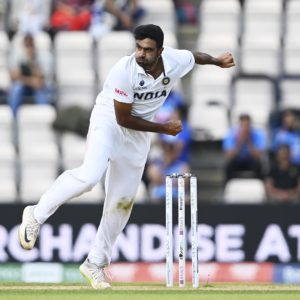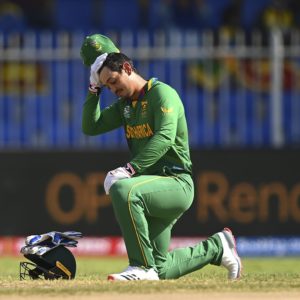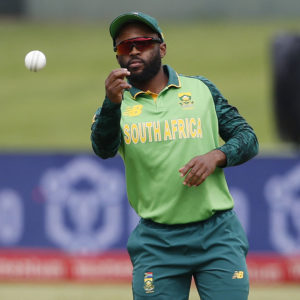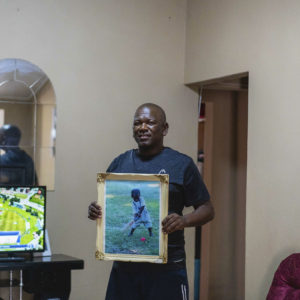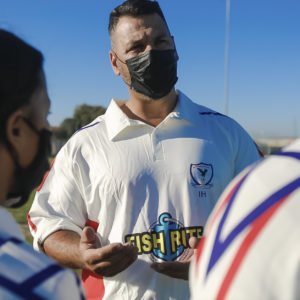Science ensures a succession of fast bowlers for SA
The Proteas have consistently had a bevy of strong pace bowlers. The man in charge of ensuring this remains the case for many years to come is confident that all the right plans are in place.
Author:
24 February 2022
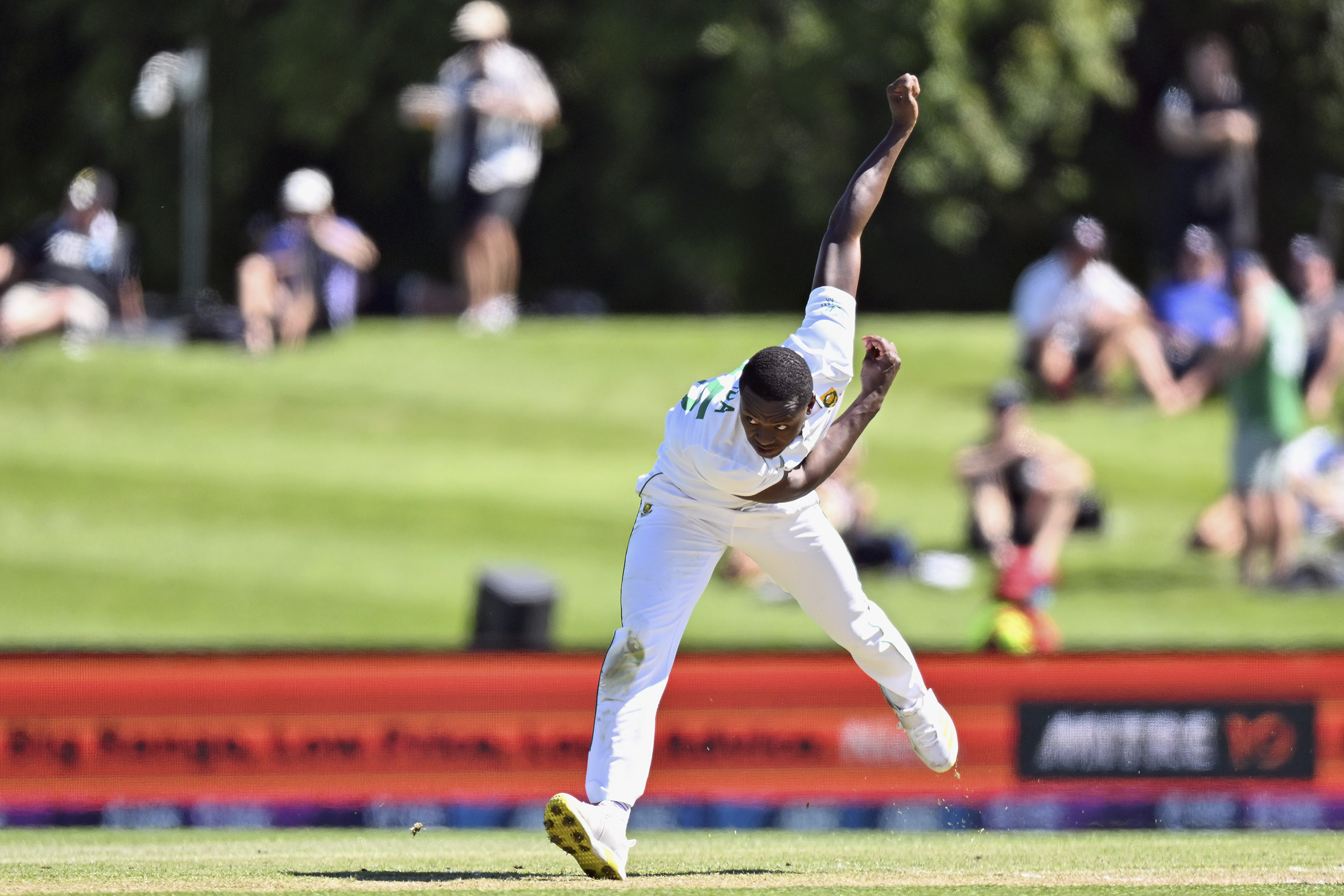
The act of fast bowling could, and should, be considered among the most aggressive and dangerous practices in sport. Few competitive sports call for hurling a rock-hard object at an opponent’s head with the objective of removing said person from the crease.
It’s said that a Test batter has 0.6 seconds to assess a delivery and decide on a shot to play while allowing the brain to inform the body to perform it. However, it takes 0.4 seconds for a fast ball to reach a batter. Who blinks first, and whoever wins this duel between bat and ball wins the moment, and ultimately the contest.
It is at this juncture, the brutal edge of cricket, that fast bowlers thrive and where the idea of cricket as a gentleman’s game dissipates amid the vapour of a paceman’s rage.
Related article:
Fast bowling, we were told, required a particular brute with a rudimentary set of skills and more brawn than brains. It was thought that fast bowlers had only to be muscular, ill-tempered and bullish enforcers of a team’s ethos.
We now know this not to be true and that fast bowling can comfortably be situated between an art form and science. It is after all the science that is driving the progression of fast bowling in world cricket today. Nowhere is this more apparent than in South Africa.
The Proteas, it seems, have hit on a rich vein of fast-bowling resources that looks likely to yield results for a few generations to come. The emergence of Marco Jansen and the return to South Africa of Duanne Olivier have bolstered an already strong Proteas pace department that includes Kagiso Rabada, Anrich Nortje, Lungisani Ngidi, Beuran Hendricks, Daryn Dupavillon, Glenton Stuurman, Lutho Sipamla and Sisanda Magala. Six of them are on the current tour of New Zealand.
Stocking the pantry
The cupboard of South African quicks in 2022 looks comparatively fuller than it did in 2017 when the then Proteas coach, Otis Gibson, must have felt like Old Mother Hubbard when she discovered the cupboard was bare. It was then that the seeds of South Africa’s next crop of fast bowlers were planted by Gibson and former Proteas bowling coach Vincent Barnes.
“I had a meeting with Otis Gibson and he asked me is there any way we could monitor all the fast bowlers in the country?” says Barnes. “At that time we had Kagiso Rabada, Dale Steyn, Vernon Philander and Morné Morkel. At least three of them were injured. The only fast bowler with international experience was Rabada.
“The concern was who is ready to play international cricket? That was the conversation we had. I left and I drew up a list from Kagiso Rabada all the way down to age-group level. After looking at it we decided what we needed to do.”
Related article:
Barnes, who is the high-performance manager of Cricket South Africa (CSA), has been a consistent curator of South Africa’s impressive line of world-class fast bowlers. His nurturing hand is visible in the pedigree of Steyn, Morkel, Rabada and many more. A feared fast bowler in his heyday, Barnes is acutely aware of the need to manage South Africa’s fast-bowling resources for years to come, knowing that injury and slumps in form could at any time change the fortunes of the national cricket team if there is no depth in the squad.
“Fast bowlers are going to win you matches. I was involved with the Proteas for a very long time and we’ve had some great fast bowlers. Having that type of skill is absolutely priceless. There are tons of guys who can bowl in the 130s. Guys like Vernon Philander could bowl in the late 120s and 130s and get away with it because he had great skill,” Barnes says.
“In the younger guys I look for pace. With some guys, I know they can bowl quicker but they’re not. I go up to them and try to encourage them to keep pushing it, saying to them they’re going to have to work harder but it’s going to pay off.”
Measuring and tracking
For concrete answers and measurables, Barnes looked at the data and got the backing of all provincial coaches in the country before developing a comprehensive database of all fast bowlers from the Proteas all the way down to Under-17 level. The database helps Barnes and his team track the progress of every fast bowler, including how fit they are, what speeds they’re generating and how many overs they’re bowling.
“The key for any fast bowler is to try to keep him or her on the field for as long as possible. So how do we do that? We’ve got to look at the way they bowl, their fitness levels. We know we can improve fitness levels – we can test them,” Barnes says. “When it comes to bowling actions it’s not always that easy. I needed data to tell me that this bowler needs to bowl this much in order to be world-class, and if this bowler continues this way he’s going to break down.”
To do the testing, Barnes contacted Benita Olivier from the University of the Witwatersrand who specialises in musculoskeletal physiotherapy. An elite fast bowlers group was set up in early 2018 and about 30 men and women fast bowlers were tested.
Related article:
“It gave us so much information,” Barnes says. “They do biomechanical testing. The bowlers were recorded on video, including the pace they bowl using the bodysuit. Then they would wear practice clothing and bowl as fast as possible so we could measure them with the speed gun.”
This painstaking and highly technical process has been under way for three years and resulted in more informed decisions on and off the field, better planning and management of players, and ultimately a better performance. In winning the recent home Test series against India 2-1, it was the Proteas’ fast bowlers who upstaged their more lauded counterparts. Jansen, for example, picked up 19 scalps at an average of 16.47, while Rabada finished as top wicket-taker with 20, with third place going to Ngidi with 15 wickets.
“When Marco made his debut, I knew what he could do. I just wanted to see if he could handle the pressure. I thought he did very well. As a unit, we were out bowled in the Centurion Test. I thought India bowled unbelievably well, but they never bowled as well as they did in that first Test,” Barnes says.
Promising future
So, what of the future of fast bowling in South Africa that is in apparent tip-top shape? Who are the speedsters clocking the right numbers and churning out the most impressive data sets?
“We’ve got a couple of boys in that [Under-19] squad who can bowl 140 plus. Like Aphiwe Mnyanda, who was at the Under-17 camp that was joined by the Under-19s. They basically selected him from there into the Under-19 squad that went to the World Cup,” says Barnes.
“We’re starting testing again in May, but I’ve narrowed down the bowlers to 21 fast bowlers, where we just focus on guys who are bowling in the upper 130km/h and 140km/h, another five bowlers from the Under-19s and nine fast bowlers from the women’s side. I’ve sent these names to our provincial coaches and I’ve spoken to them and we all are happy with this list.”
Related article:
Open communication and sharing data appear to lie at the heart of South Africa’s fast-bowling factory line. Once considered the realm of macho men who were blind to the nuances of the game, the fast-bowling department is now run by software developers, data specialists and medical experts, some of whom have never played the game at a professional level.
“What has made a difference is the type of people I have working with me now. I have three fantastic full-time coaches: Shukri Conrad, Malibongwe Maketa, and Neil McKenzie. I work with an incredible team and that makes my job easier. We pool all our information together and that is kept by me in our department. Then every bowler is monitored for workload every week. This information gets fed into our programme and that kicks out data to say, for example, that Kagiso Rabada has bowled far too much, so he has spiked. Glenton Stuurman has bowled too little, so he is under pressure if he goes into a game under-bowled. That gives us very useful data as to who is red-flagged,” Barnes says.
The young and the rested
The man entrusted with South Africa’s precious Generation Z fast bowlers is former Proteas swing bowler and current bowling coach Charl Langeveldt, who is spoilt for choice at the moment. It’s a time he doesn’t take for granted.
“As South Africans, we always pride ourselves on our fast bowling, our aggression. When you’re in a transition phase, it’s always good to see younger guys coming in and staking a claim and performing well. We were always blessed with a lot of fast bowlers, but all of a sudden it just happened that with guys like Vernon Philander, Dale Steyn and Morné Morkel retiring, Rabada at 23 was leading the attack,” Langeveldt says.
“Vincent Barnes, being the lead bowling coach, goes around the country and gives the feedback. We know exactly who is injured and how long he will be injured for and how his recovery is going, and it makes my job a lot easier because the communication has been better over the last couple of years.”
Related article:
Rabada’s broad shoulders have carried the South African attack since his Test debut in 2015. The 26-year-old has barely been rested, apart from the forced hiatus that Covid-19 placed on all sports in 2020 and 2021. Rabada’s longevity in the game and the emergence of a strong supporting cast in Olivier, Nortje, Stuurman, Sipamla and company is the unofficial mission statement of CSA’s fast-bowling programme.
“The programme that we have has made such a difference to how we prepare players. Rest is also important. They play a lot of cricket, especially our national team, and we rely a lot on certain individuals,” says Barnes. “Players like Anrich Nortje and Kagiso Rabada are like gold, so we have to understand that at some point we have to say to them look, you’re not actually going on this tour, because after this are two more tours and they’re major tours,” says Barnes.
“I don’t ever believe we will be in a situation where we say the cupboard is bare. I was with the national team when Shaun Pollock was dropped. I said you can’t drop Shaun Pollock, he’s a legend! Graeme Smith and Mickey Arthur said he wasn’t taking wickets on the subcontinent. They said they want to bring Dale Steyn and Morné Morkel in. So people thought that when Pollock retired the cupboard was going to be bare, or when Allan Donald retired the cupboard was going to be bare. The cupboard has never been bare, and we will continue to churn them out.”

